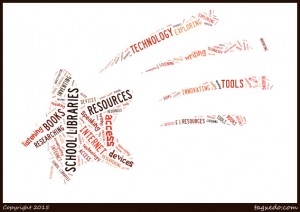The June, 2018, American Libraries magazine is one of the most thought-provoking issues ever. I believe the summary and links from Jim Neal’s Midwinter President’s Program on librarianship and neutrality should be required reading for every library science graduate student and used as a discussion starter in classrooms and libraries everywhere. From serving the literacy needs of patrons in prison and those of Women, Infants, and Children (WIC) program families, to using visual data to activate middle school readers, to addressing Melvil Dewey’s legacy, this issue is a treasure trove of information, knowledge, and wisdom. It’s also a rich source of topics for this blog.
ALA President Jim Neal’s session at Midwinter in Denver featured a debate with two speakers in favor of neutrality (James LaRue and Em Claire Knowles) and two speakers against neutrality (Chris Bourg and R. David Lankes). A panel of four speakers responded to the debate: Emily Drabinski, Emily Knox, Kathleen de la Peña McCook, and Kelvin Watson. The full program video is available online to Midwinter attendees at bit.ly/mw18-pres.

These are some of my takeaways beginning with the pro-neutrality debaters. James LaRue offered three dimensions for neutrality: service, access, and collections. In his view, neutrality is “enshrined in (library) values” and can be summarized as “everyone gets a seat at the table” (34). Em Claire Knowles noted that libraries/librarians have social goals but believes “an active, engaged, continually reaffirmed neutrality is just the first rung on the ladder to advocacy and social justice” (35).
On the other side of the debate, Chris Bourg noted that “neutrality, by definition, is not taking sides” (34). Operating from that definition, he notes “decisions like how much funding a library gets, who should have access to a library, and even where a library is located are not neutral decisions” (34). R. David Lankes further unpacks the “myth of neutrality” (35) and gives this example: “a poor child needs a different level of service to meet our mission than college-educated adults in terms of literacy” (36).
Emily Knox’s comment reproduced in the image above rings true for me (37). Libraries, and school libraries in particular, cannot collect every book published for youth. In our decision-making, our goal is to provide access to all sides of issues. But with limited budgets and the charge to provide resources aligned with school curricula, school librarians must pick and choose. We do so in the displays we create, the literacy programs we offer, and the ways we collaborate with classroom teachers and specialists and involve students and families in the library program. As the article in this issue by school librarian Kelsey Cohen demonstrates (see next week’s blog post), the library cannot be neutral and simply serve the students who are eager to read.
To be honest, the decisions we make reflect our shared librarianship values, the values of our communities, and our own personal values as well. In the types of outreach and the target audiences for our outreach activities, whether in school, public, or academic libraries, librarians who adhere to our value of “access” seek to be fair rather than equal. A neutral library would simply exist and serve the patrons who come. The library/librarian that assesses the community and determines how to best help people achieve their goals will, of necessity, do more for some than for others.
As Kelvin Watson noted: “We can’t be neutral on social and political issues that impact our customers because, to be frank, those social and political issues impact us as well” (38). In schools, our English language learners and their classroom teachers may need more literacy support than our gifted and talented students and their classroom teachers. Youth living in poverty may need access to literacy and technology resources more than our affluent students who have access in their homes. Inviting an author from an underrepresented group to provide a literacy event may speak in more personally meaningful and impactful ways to some of our students and families than to others. In my opinion, the ways school librarians address academic, social. and political inequities is not a neutral stance.
Since I was unable to attend Midwinter, I especially appreciate the excerpts available in American Libraries magazine and the links to some of the presenters’ full remarks. As noted above, I believe this article can spark a lively and critical conversation in libraries across the country and around the world. I hope you will make time to seek out, read, and discuss the issue of neutrality in librarianship in your professional learning networks.
Work Cited
American Libraries 49 (6). June, 2018.
Image credits:
Quote from Emily J. M. Knox
Youngson, Nick. “Decision-making Highway Sign.” http://www.creative-commons-images.com/highway-signs/d/decision-making.html








 The BACC bloggers are experimenting with exploring a shared topic each month. We will share various perspectives and points of view.
The BACC bloggers are experimenting with exploring a shared topic each month. We will share various perspectives and points of view.